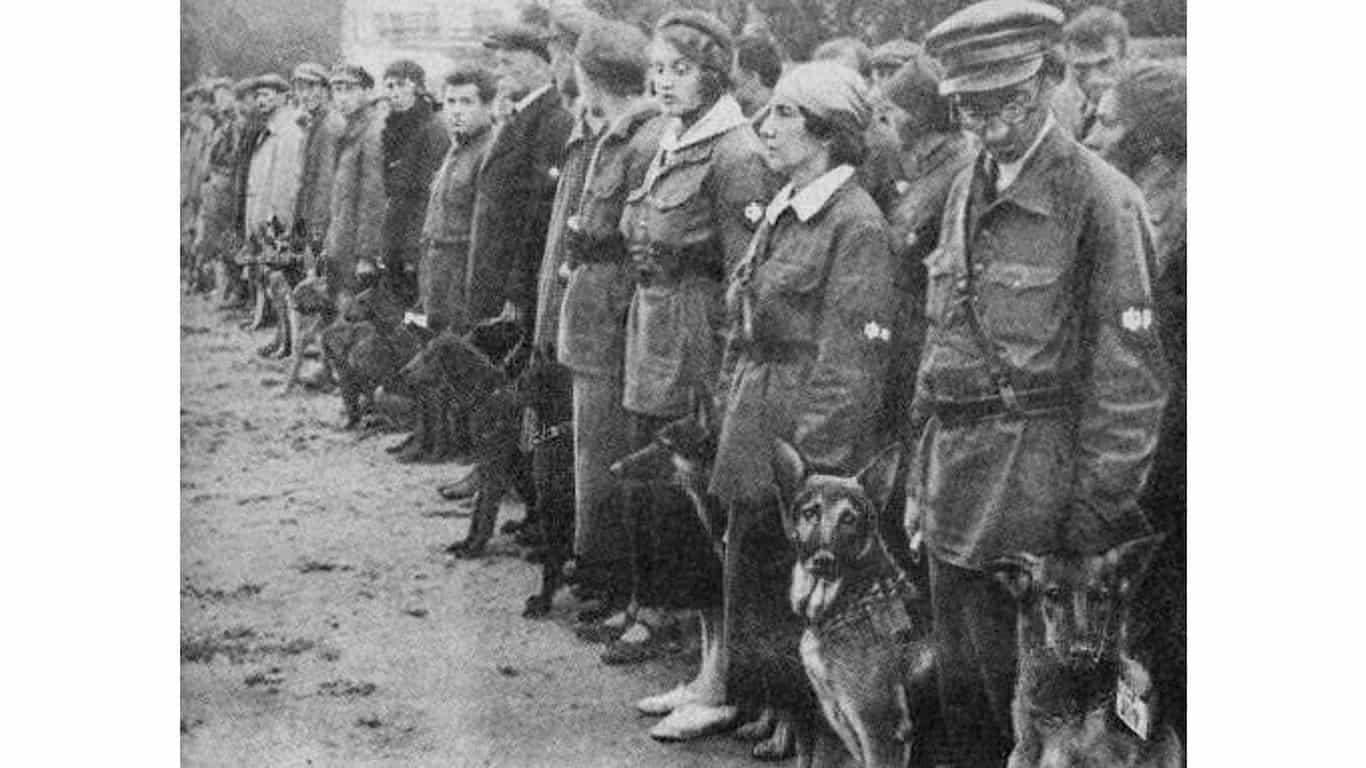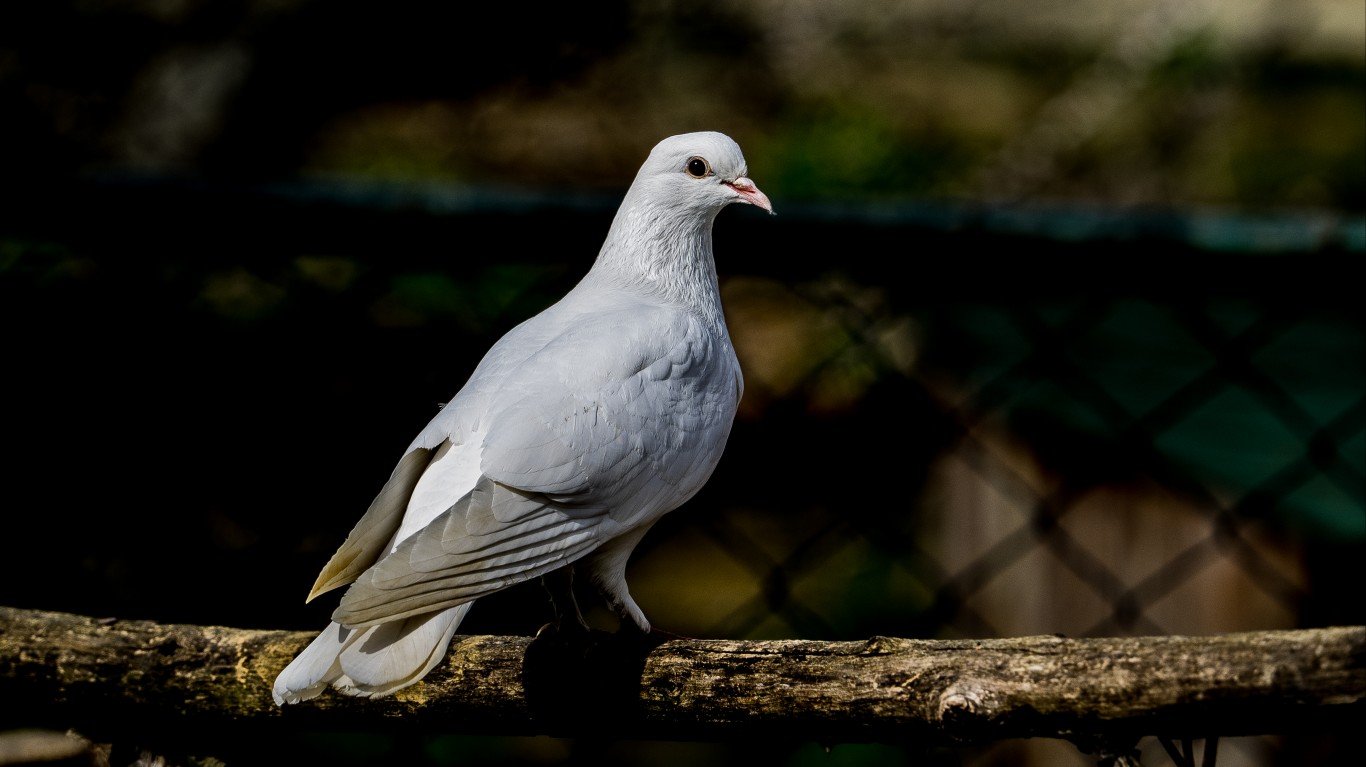They are the beasts in battle, the fighting fauna, the wildlife at war. These are the animals that have played significant roles in warfare since humans first picked up a weapon.
To compile a list of the roles that animals have played in warfare, 24/7 Tempo referred to sources such as the Imperial War Museum, the Smithsonian magazine, and Interesting Engineering. As the website of the United Kingdom’s Imperial War Museum reminds us, the animals involved in human conflicts had no choice.
Animals in wartime conveyed ammunition, supplies, and medicine; provided communications, warnings, and detection; and were used for construction. Some even entered combat as weapons themselves.
Horses played numerous roles in warfare as cavalry; transporters of weapons, supplies, and vehicles; and pulled ambulances filled with the injured. Other animals used for transport included oxen, mules, and donkeys.
Dogs and pigeons were called on to relay communications. Parrots and rats — the latter the bane of troops serving in the trenches in World War I — became early-warning detectors for incoming aircraft and poison gas.
On the subject of detection, dolphins and sea lions have been employed by the United States and other nations to identify mines and other objects underwater.
Some animals have themselves been used as weapons, such as snakes, scorpions, mosquitos, and, of course, elephants. The Romans, smarting from a defeat at the hands of Carthage’s use of the pachyderms in combat, countered by deploying pigs whose squeal unnerved the behemoths.
Other animals such as fox cubs, goats, raccoons, and alligators all were mascots for various combat units and provided much-needed morale boosters for troops on war’s frontlines. (These are 12 military strategies that changed the course f history.)
The United Kingdom saw fit to honor its valiant animals by creating the Dickin Medal during World War II and later built The Animals in War Memorial in London’s Hyde Park.
Here are the roles that animals have played in warfare.
Horses
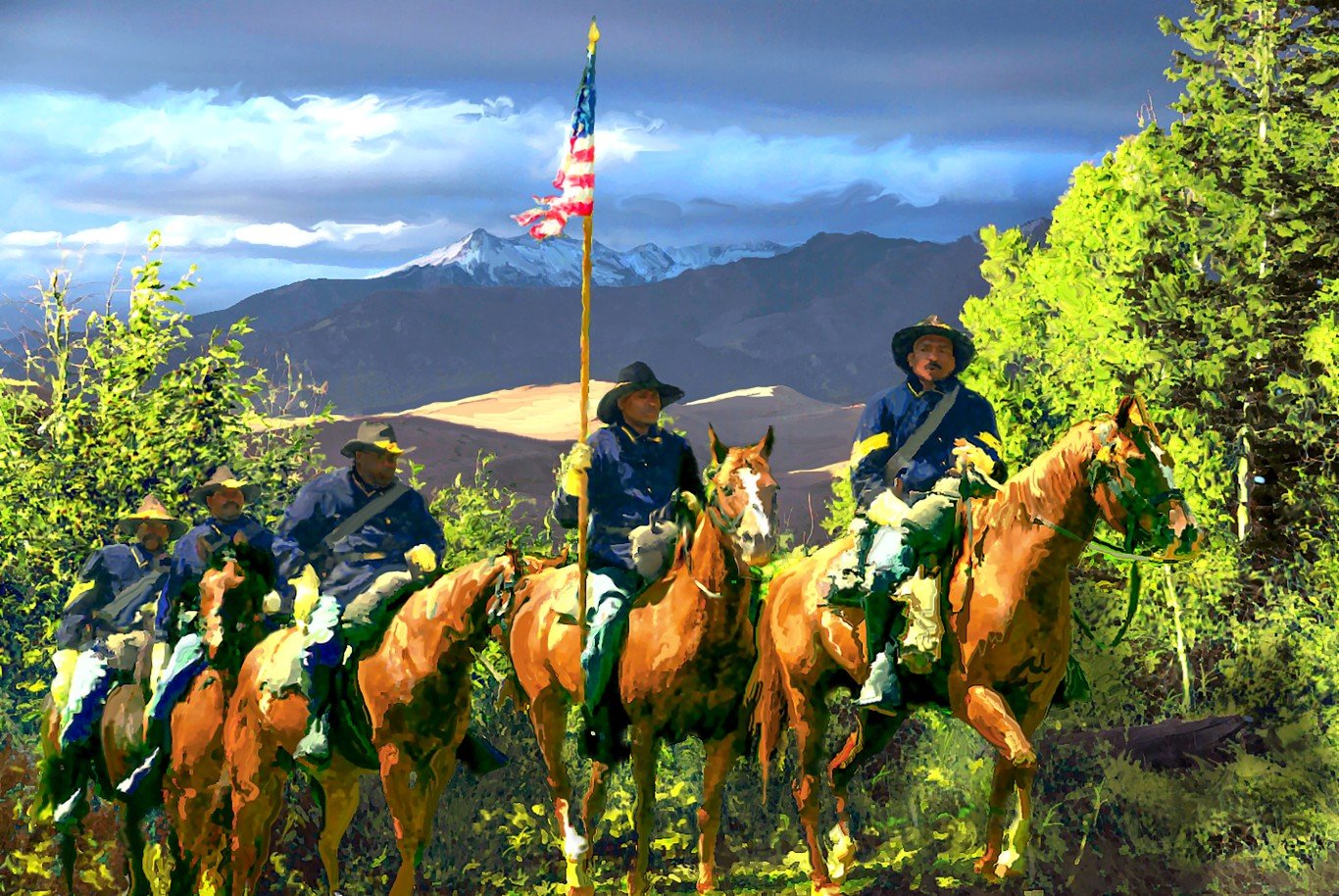
- Role in war: Cavalry, transporting guns, supplies, and equipment
- Details: Animal most used in warfare since earliest records of war. Millions of horses were used in World War I, transporting men, supplies, equipment, vehicles, and guns. Horse-drawn ambulances were part of a vast network of medical services. Despite its effective use of tanks, the German Army in WWII was mostly horse-drawn.
Dogs

- Role in war: Bore medical equipment, carried messages, found explosives
- Details: Specially trained dogs donned harnesses to tote medical equipment and delivered it to injured soldiers. Dogs were rescue animals, laid telephone wires, found explosives, and carried messages. Many canines received the Dickin Medal for gallantry from the United Kingdom.
Camels
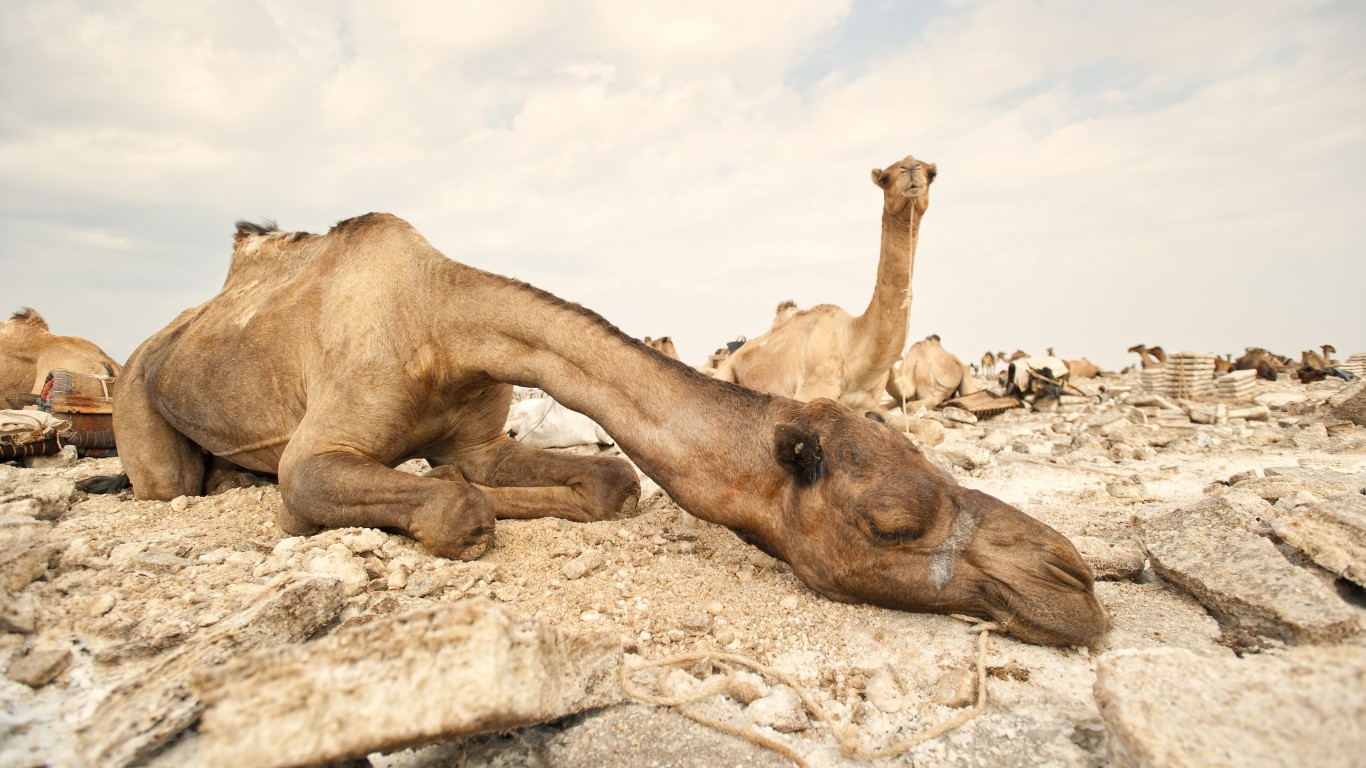
- Role in war: Transported wounded and supplies
- Details: Since antiquity, camels have been important in wars in the Middle East and handled the high temperatures there better than other beasts of burden. They transported wounded and supplies and were ridden into battle during World War I.
Pigeons
- Role in war: Carried messages; used as guide bombs
- Details: Pigeons were used to carry messages in both world wars. A pigeon named Gustav brought back the first news of the D-Day landings in Normandy in 1944. Some pigeons acted as guide bombs during World War II.
Parrots
- Role in war: Warn of incoming aircraft
- Details: The French posted parrots on the Eiffel Tower during World War II to warn against incoming aircraft.
Elephants
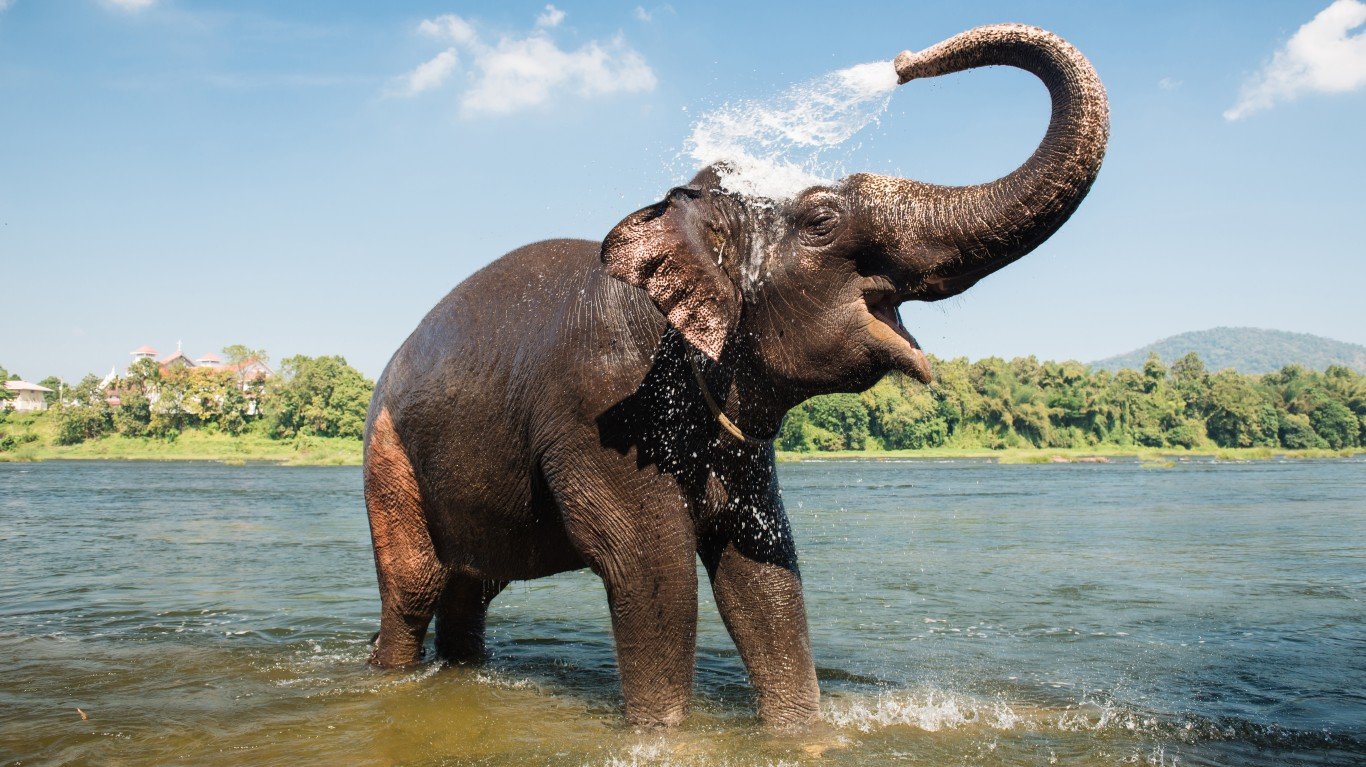
- Role in war: Used in attack, transportation, and construction
- Details: Famously used by Hannibal in his invasion of the Italian peninsula during the Punic Wars, elephants had been used by other civilizations in conflicts in the ancient world. The massive animal was also used in transportation, construction, and heavy lifting.
Mules
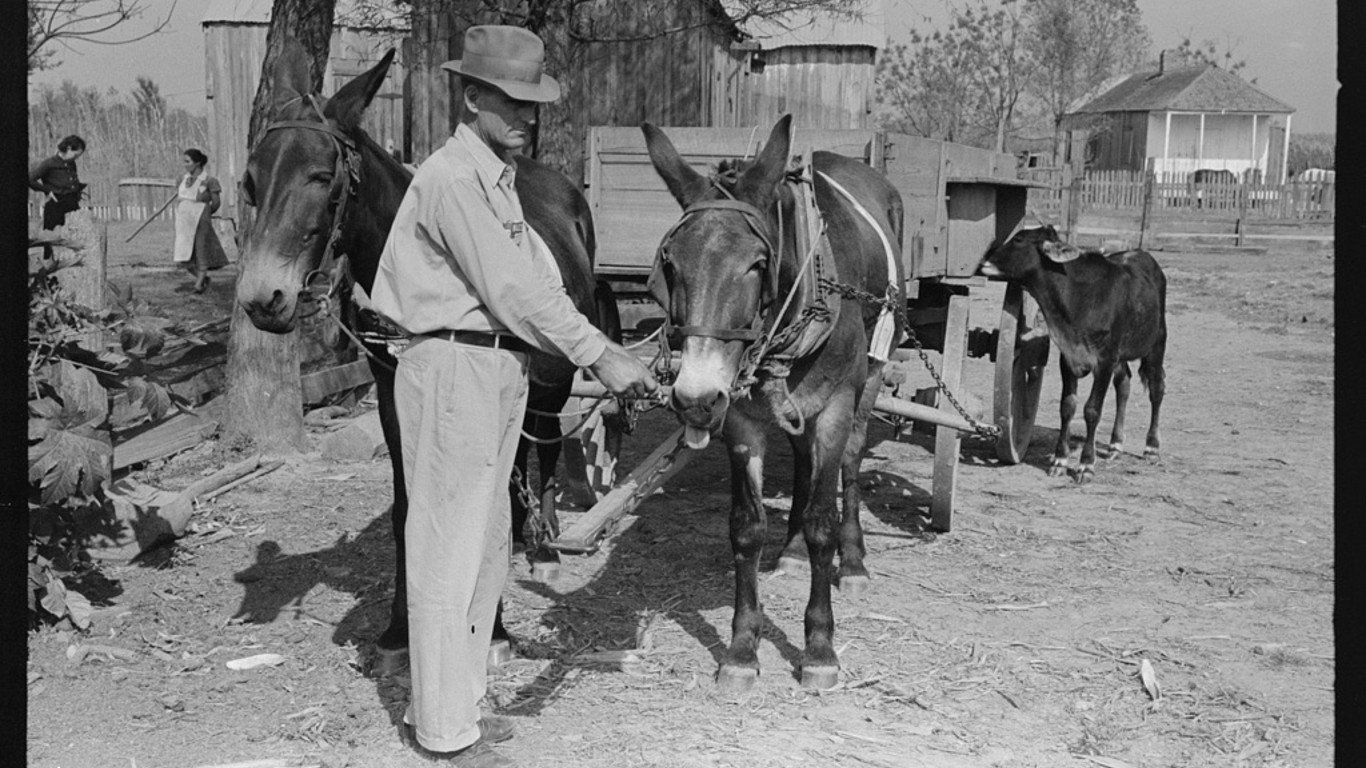
- Role in war: Haul supplies
- Details: Mules were valued because they have greater endurance and can carry heavier loads than horses. In 49 BC, Julius Caesar crossed the Rubicon on a mule, as did Napoleon when he traversed the Alps into France in 1800.
Donkeys
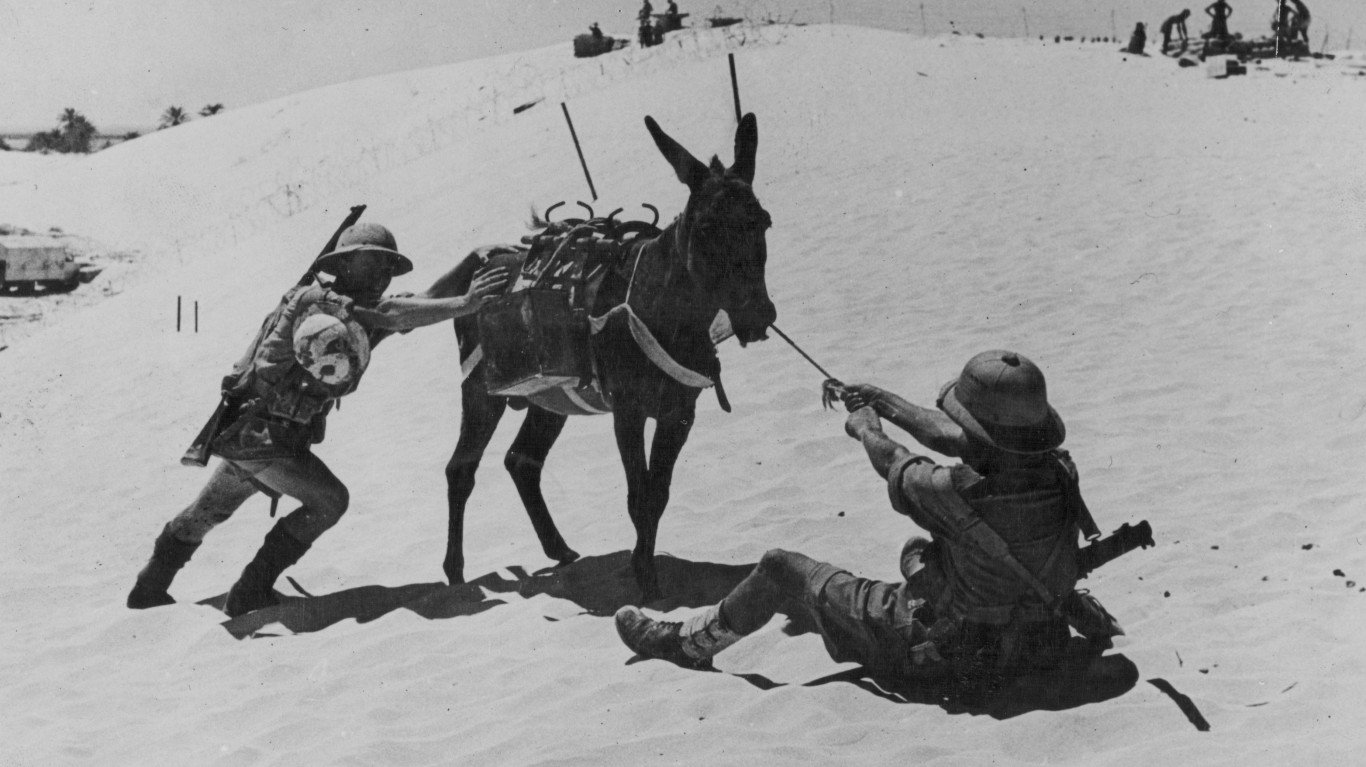
- Role in war: Carried supplies over rocky terrain
- Details: Donkeys are skilled at lugging supplies over rocky terrain of areas such as the Italian landscape in World War II. Donkeys are smart and have a better disposition than horses.
Oxen
- Role in war: Constructed railways, carried heavy loads
- Details: Oxen were mostly used to construct railways and bear heavy loads. In the third century BC, a Chinese warlord cloaked oxen as dragons to frighten and defeat an invading force.
Cattle
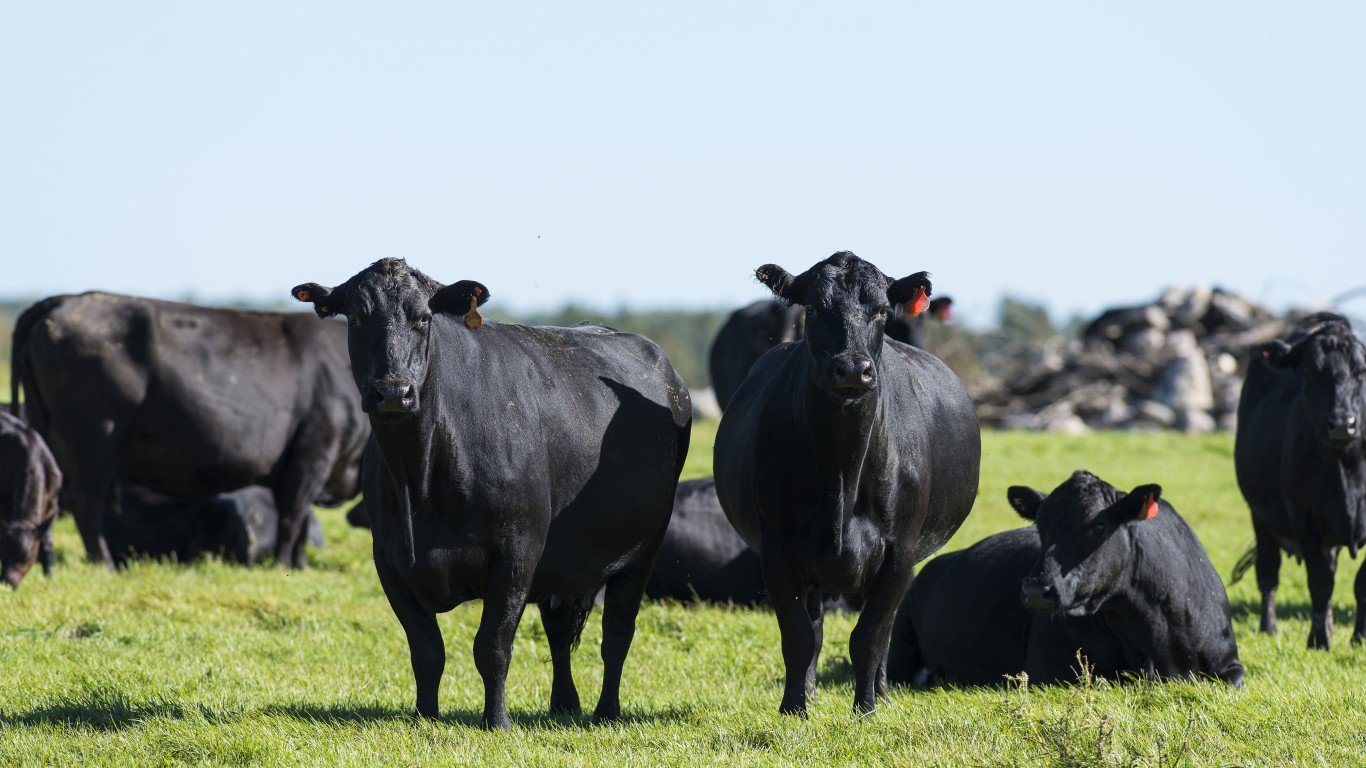
- Role in war: Used in stampedes
- Details: At the Battle of Tondibi in West Africa in 1591, the Songhai Empire sent 1,000 stampeding cattle against Moroccan infantry. That tactic had previously worked against enemies without guns. But the Moroccans had guns, which spooked the cattle. The animals turned back into the Songhai army, who lost the battle.
Pigs
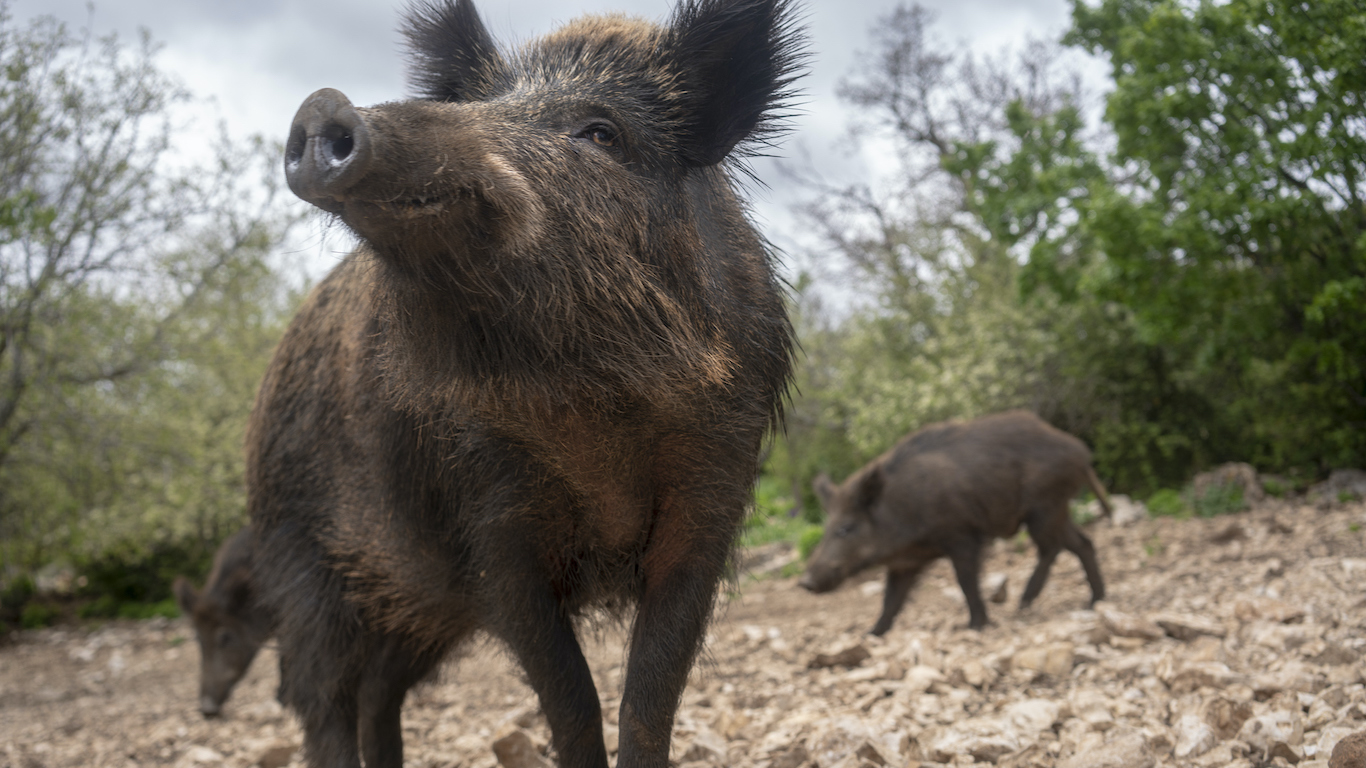
- Role in war: Frightened elephants
- Details: The Romans used pigs to frighten battle elephants in antiquity. During World War I, a pig named Tirpitz survived the sinking of the German ship Dresden, swam toward the HMS Glasgow, and served on that ship for another year.
Ducks
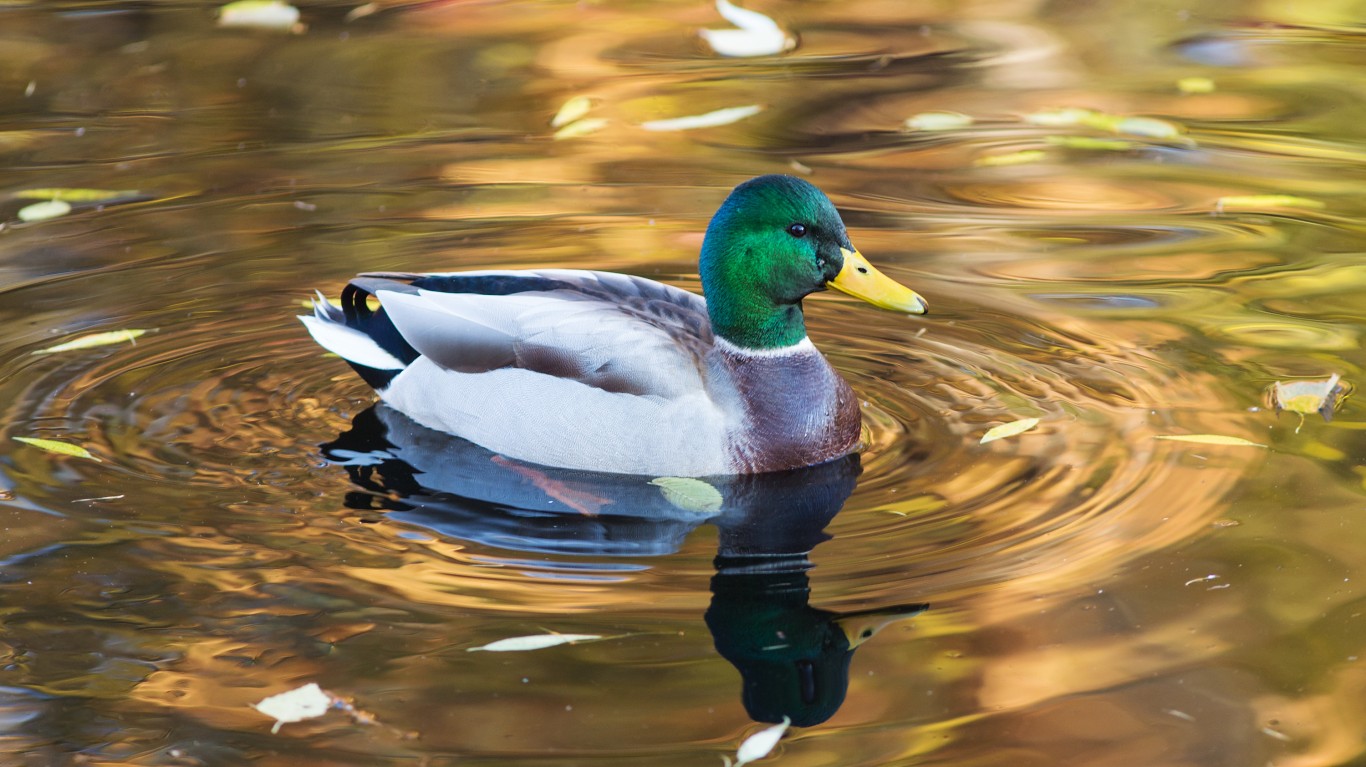
- Role in war: “Fought” at Battle of Tarawa
- Details: During World War II, Siwash, a duck won in a poker game by U.S. Marines stationed in New Zealand, landed at Tarawa with the Marines and defeated a Japanese rooster during the battle.
Bears

- Role in war: Carried ammunition
- Details: A brown bear named Wojtek was a pet of a Polish company and adopted as a cub during World War II. During the Allied assault on Italy, a mature Wojtek carried ammunition shells to the troops. He was immortalized with an emblem on the side of some Polish uniforms. Bears were regimental mascots of American troops in World War I
Dolphins
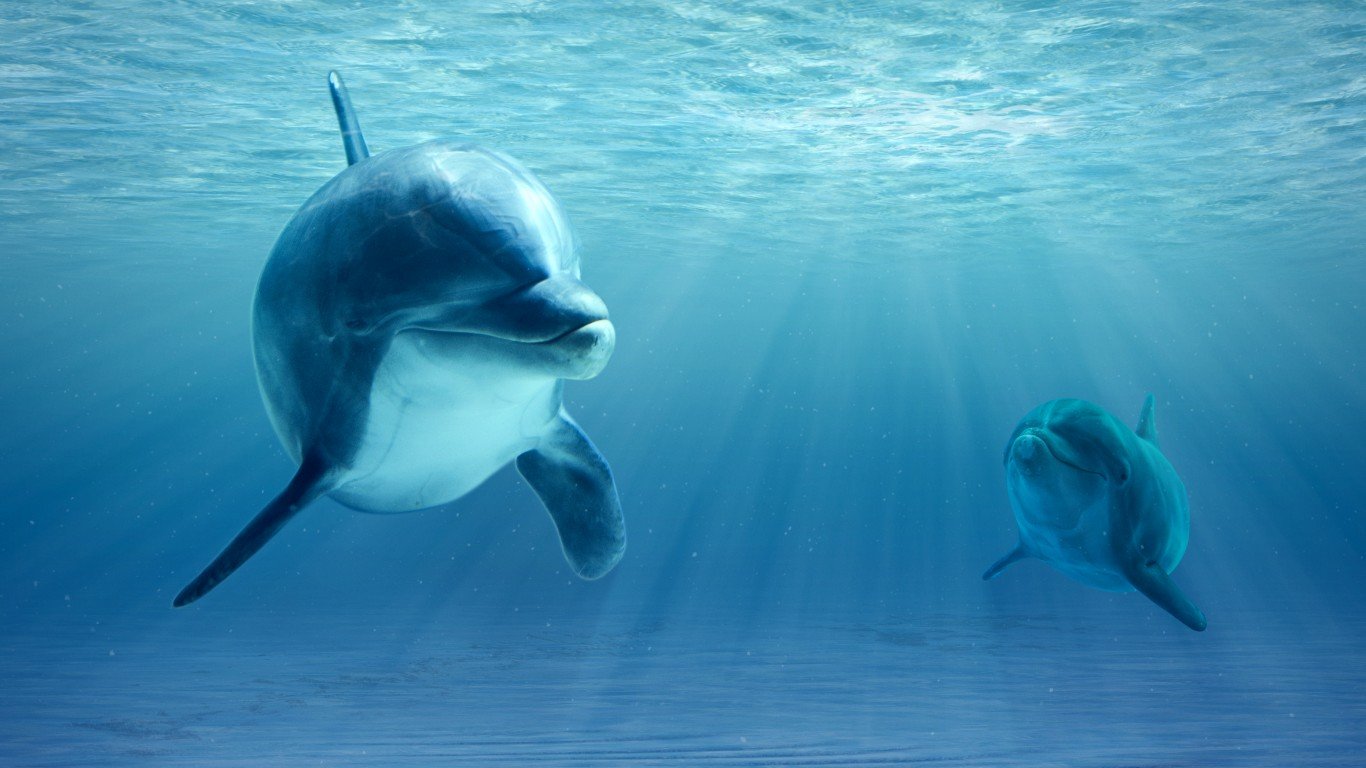
- Role in war: Identified objects underwater
- Details: A dolphin’s echolocation sense allows it to identify objects underwater that would be difficult to see for human divers. The U.S. Navy deployed dolphins to look for threats such as marine mines, or bombs fastened to the hulls of warships. The dolphins are trained to report to their human handlers with a type of “yes” and “no” response.
Sea lions
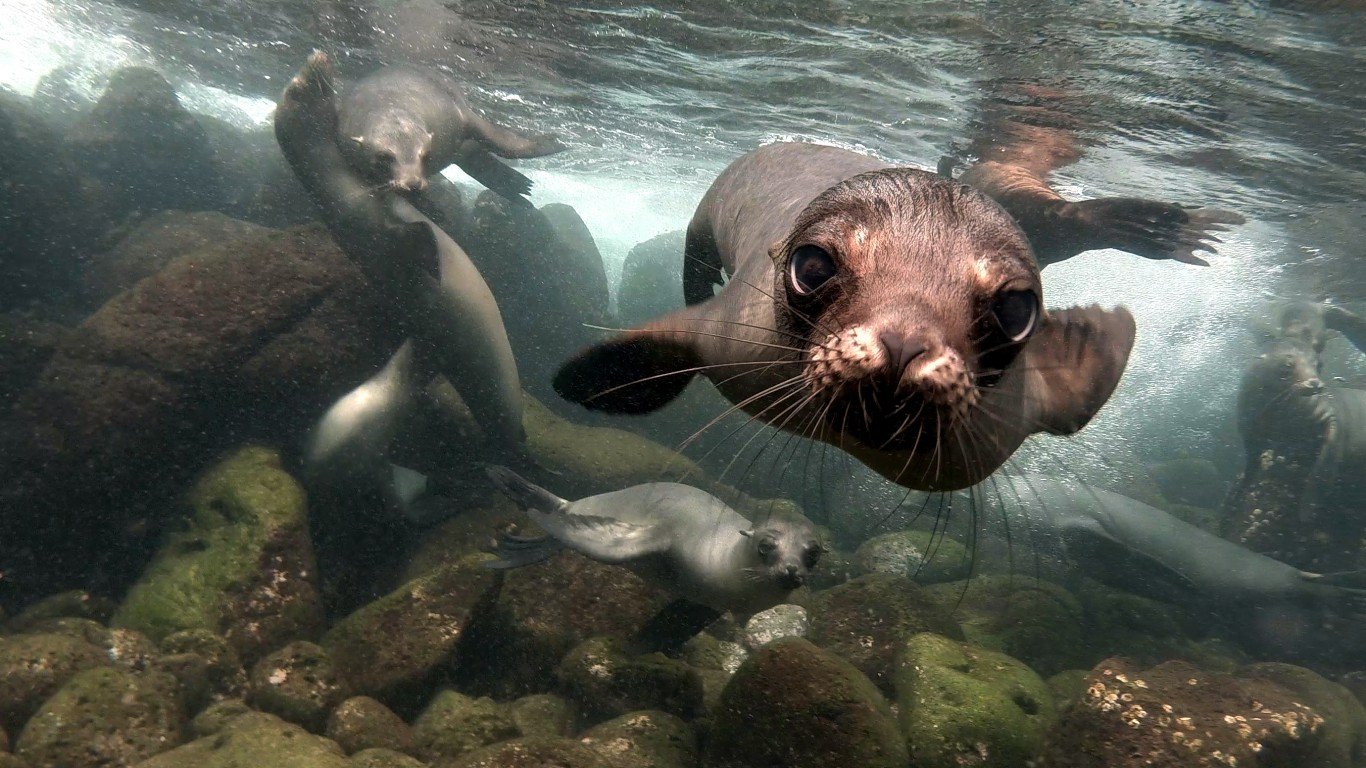
- Role in war: Detected marine mines
- Details: Like dolphins, sea lions are employed in the same manner to detect marine mines.
Mosquitos
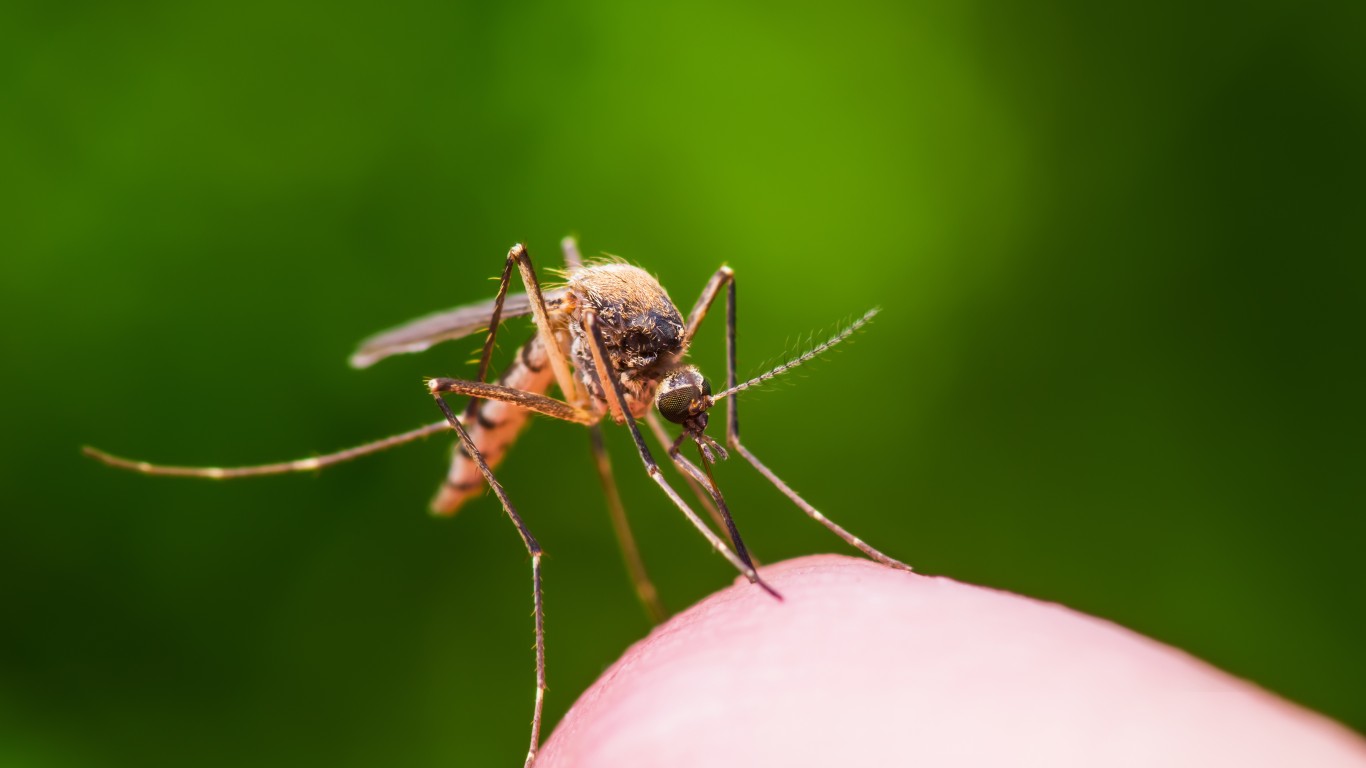
- Role in war: Carried malaria to infect foe
- Details: During World War II, Germans filled the drained Pontine swamps in Italy to provide an environment for malarial mosquitos to return and infect Allied troops.
Bees

- Role in war: Beehives launched against enemy
- Details: In 72 BC, the Greek defenders of Themyscira thwarted their Roman besiegers by unleashing bees into the tunnels that the Romans had dug under the town walls.
Scorpions
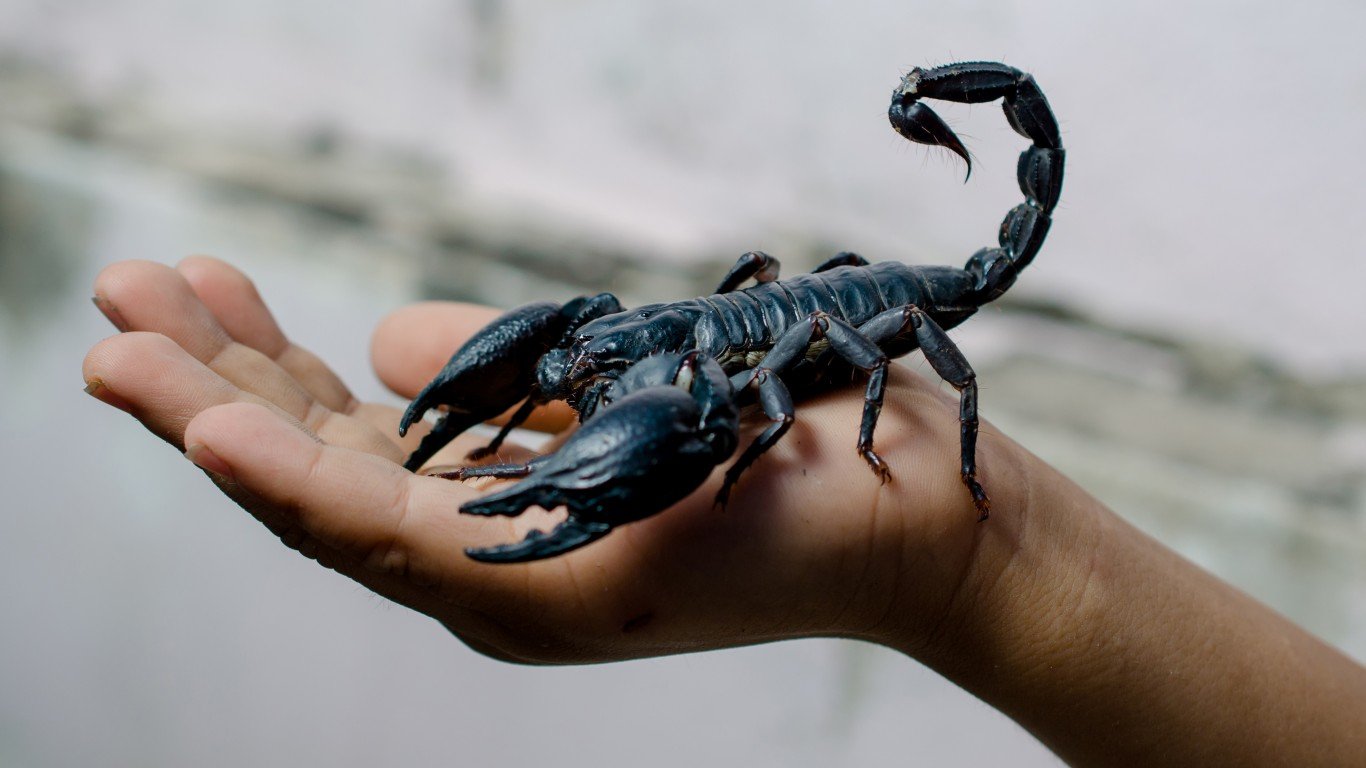
- Role in war: Jars of scorpions hurled at invaders
- Details: In 198 BC, Atrenian troops defending the city of Hatra near modern-day Mosul in Iraq hurled clay pots with scorpions, a sort of scorpion hand grenade, at an invading Roman army.
Flies and fleas

- Role in war: Bombs dropped containing flies and fleas
- Details: During World War II, Japan used insects to infect China with cholera and plague. Airplanes sprayed fleas and flies or dropped them inside bombs over heavily populated areas.
Bats
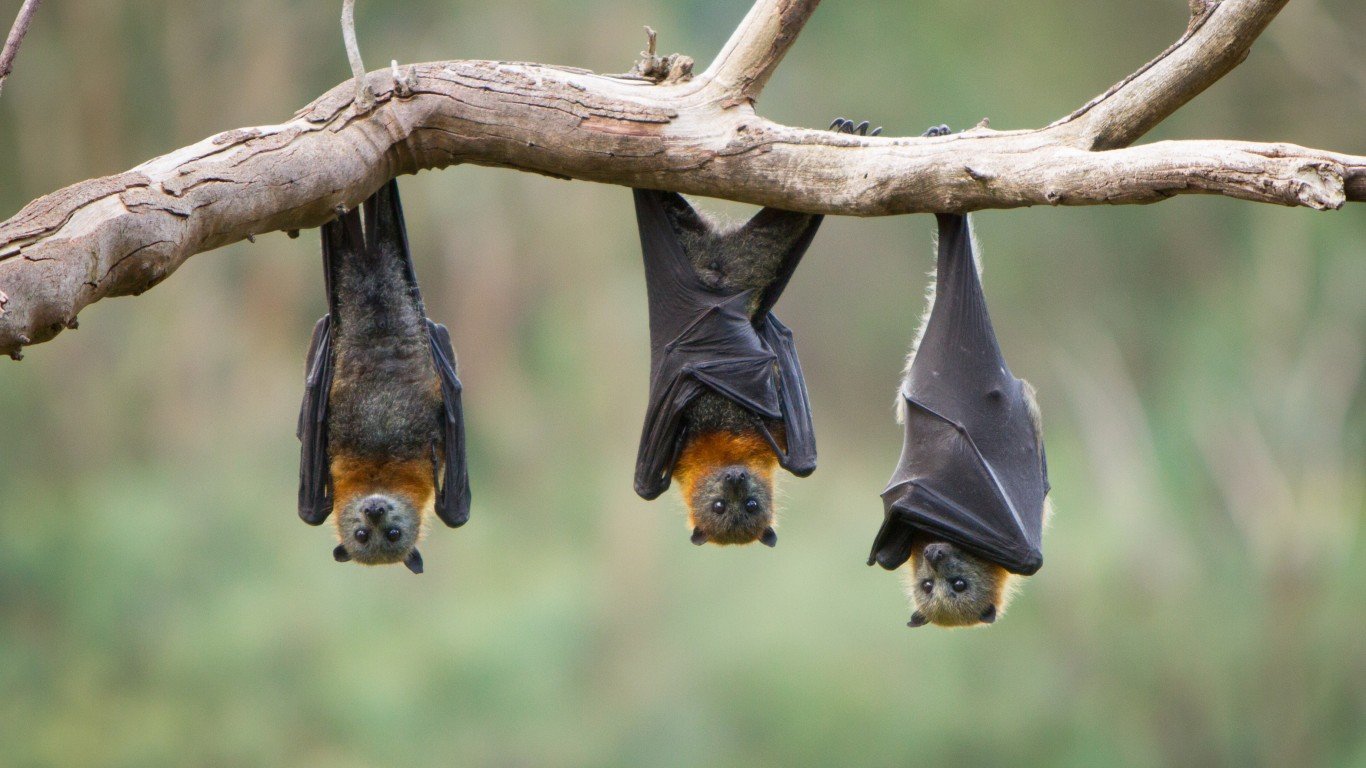
- Role in war: Bats used as incendiary bombs
- Details: The bat bomb was an experimental weapon developed by the U.S. military during World War II. The bomb was an incendiary device supposed to be delivered by bats who would nest in mostly wooden Japanese buildings that would quickly catch fire once the bomb ignited. The project was a failure.
Monkeys
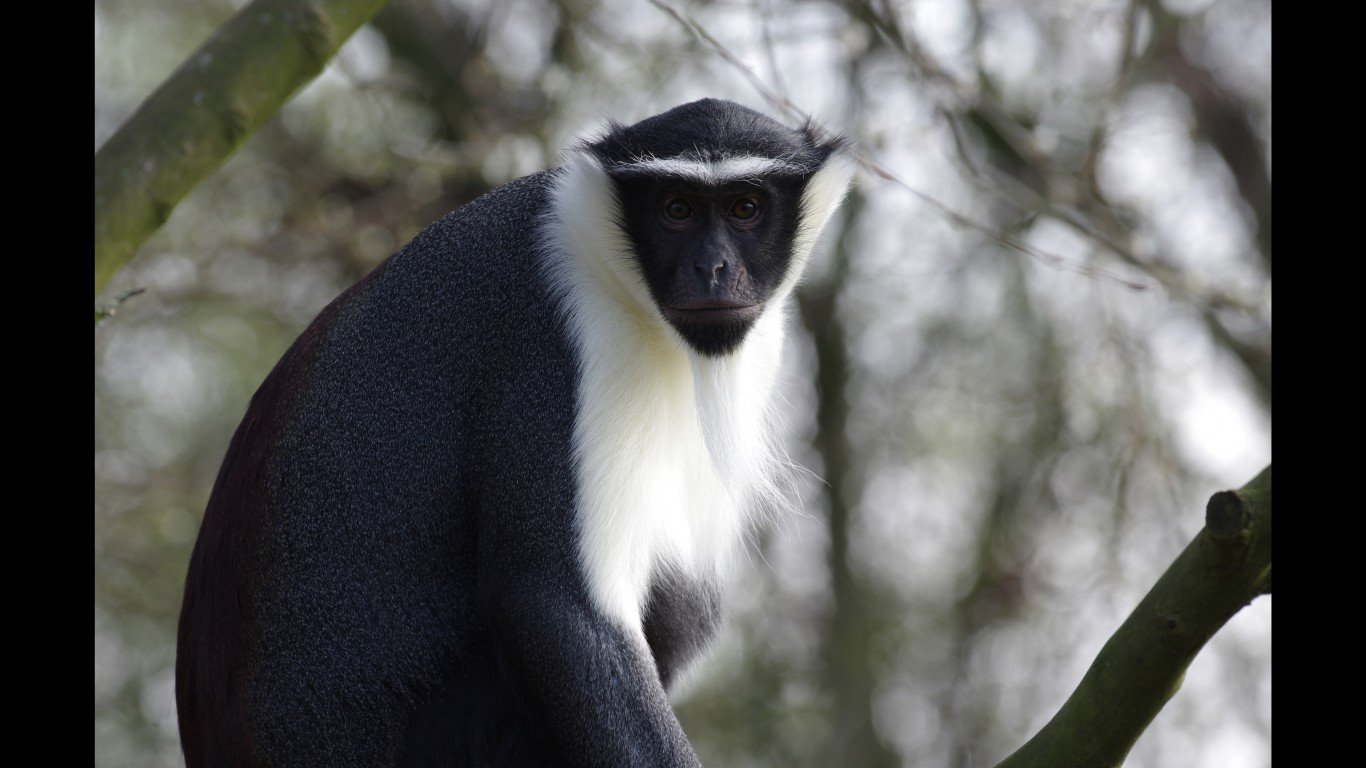
- Role in war: Used as fire bombs
- Details: Monkeys were said to have been employed as live bombs during conflicts in China during the Southern Song Dynasty (1127-1279). The monkeys were clothed in straw, doused in oil, and set on fire before being released into enemy camps. In World War I, monkeys were used as mascots.
Rats
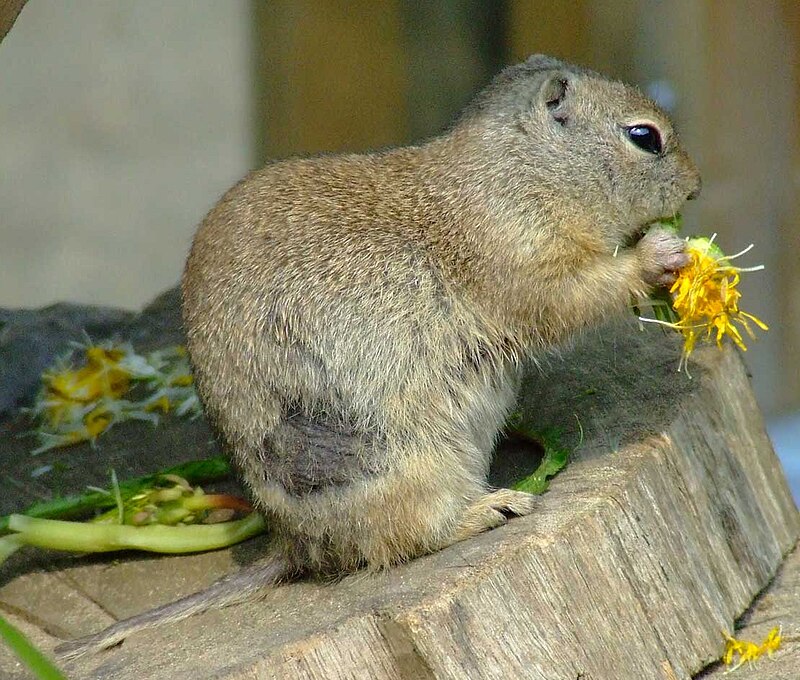
- Role in war: Rats sense coming attack and flee
- Details: Rats, bane of soldiers’ existence in World War I, could sense an oncoming attack and would run away, warning troops of enemy activity. Rats’ sense of smell has been used to detect landmines in former battlefields.
Snakes
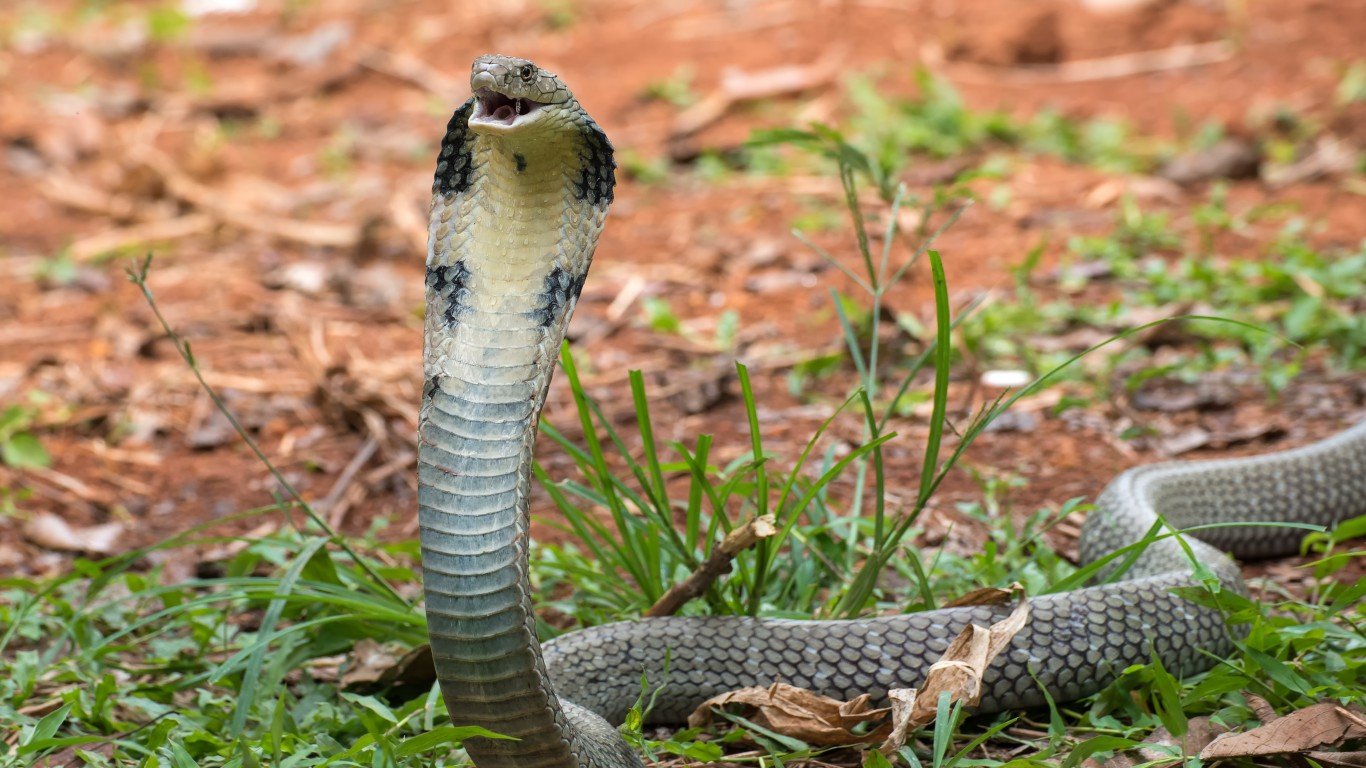
- Role in war: Poisonous snakes in jars flung at attackers
- Details: Hannibal put poisonous snakes in jars and launched them by catapult against Roman vessels, resulting in victory.
Cats
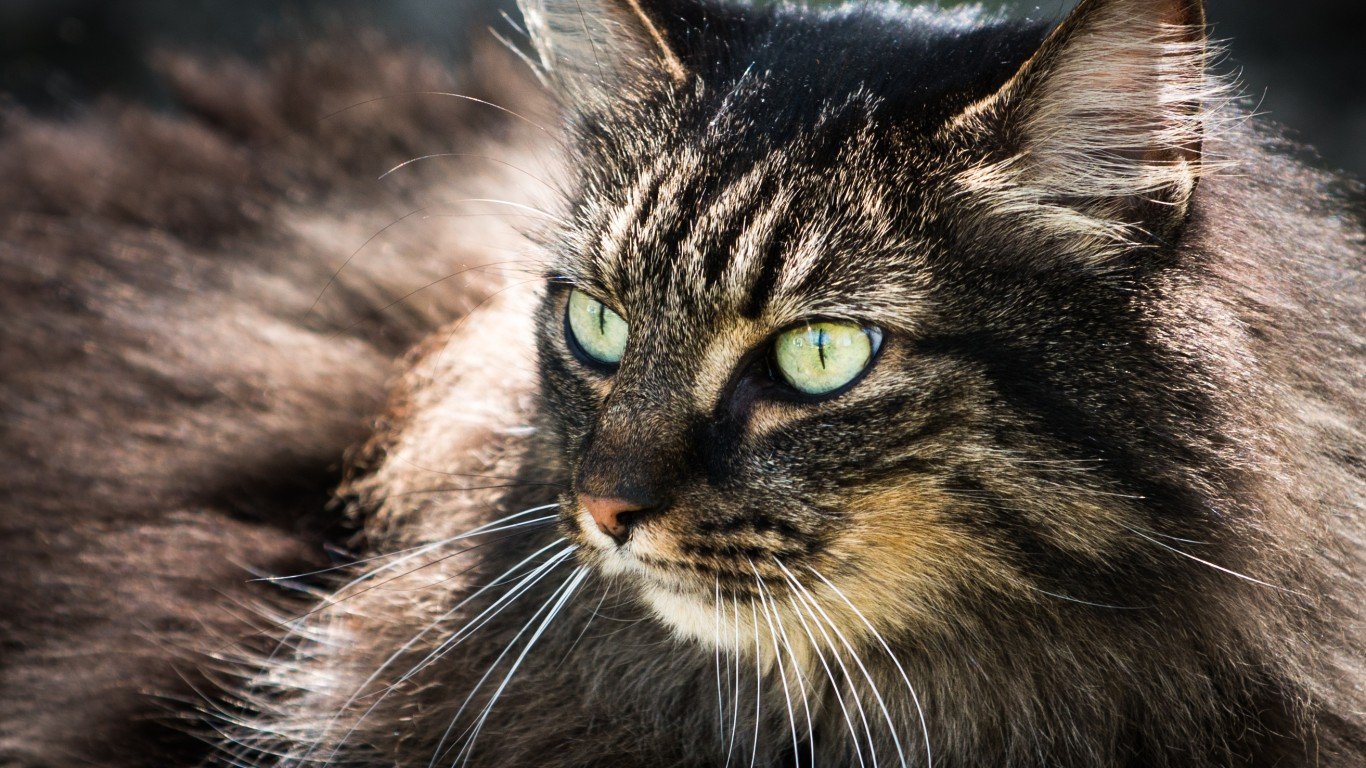
- Role in war: Surveillance devices implanted in cats
- Details: The CIA surgically implanted surveillance devices in cats during the Cold War.
Lions
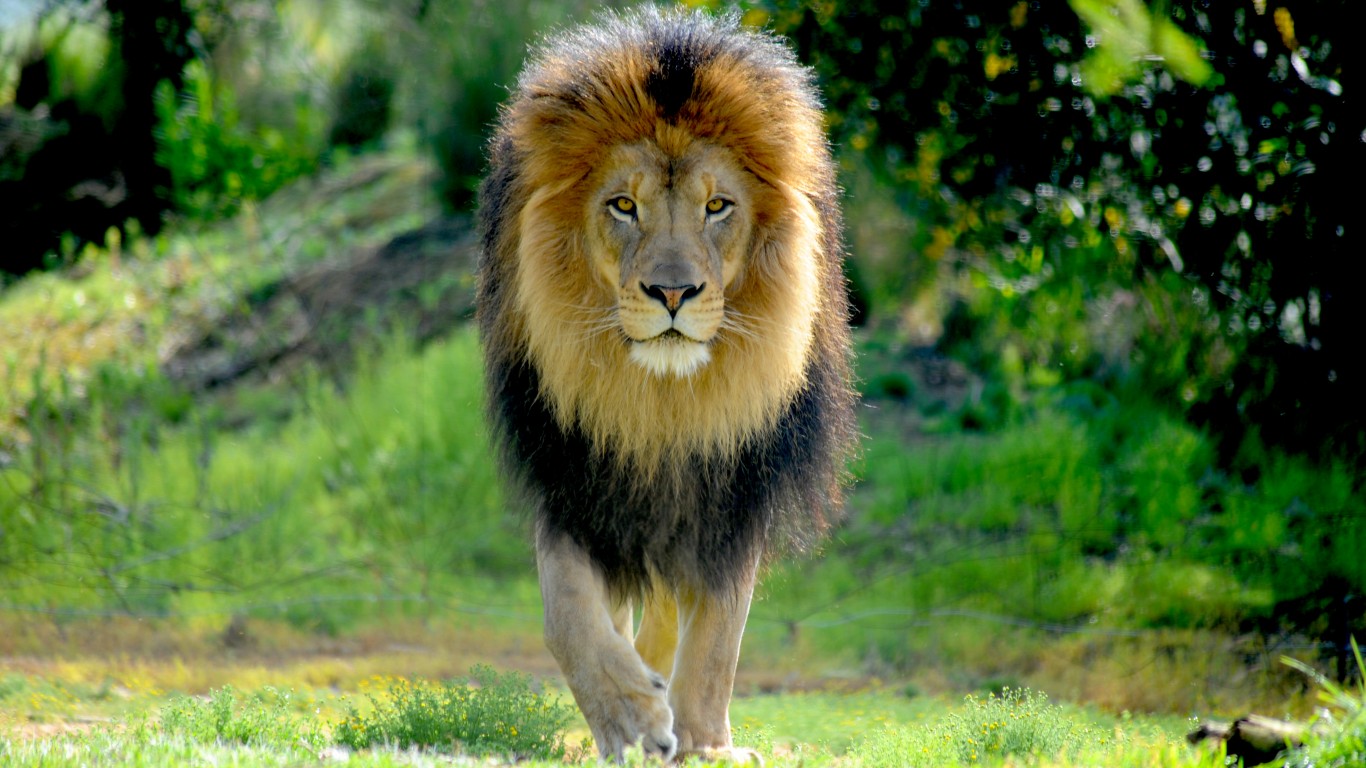
- Role in war: Unleashed in Egyptian battlefields
- Details: Ancient Egyptians were said to unleash hungry lions on the battlefield to terrify opponents. Several millennia later, the lion cubs Whiskey and Soda served as the mascots of the Lafayette Escadrille, a military unit of the Aéronautique Militaire (French Air Service) during World War I.
